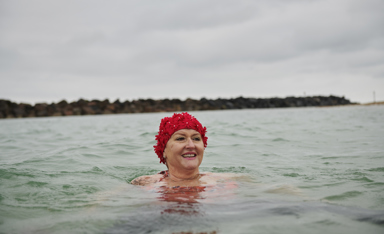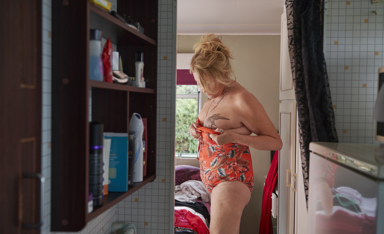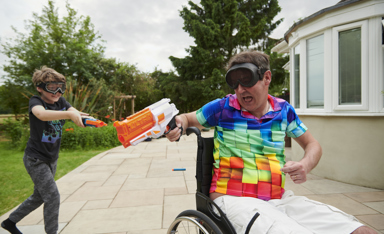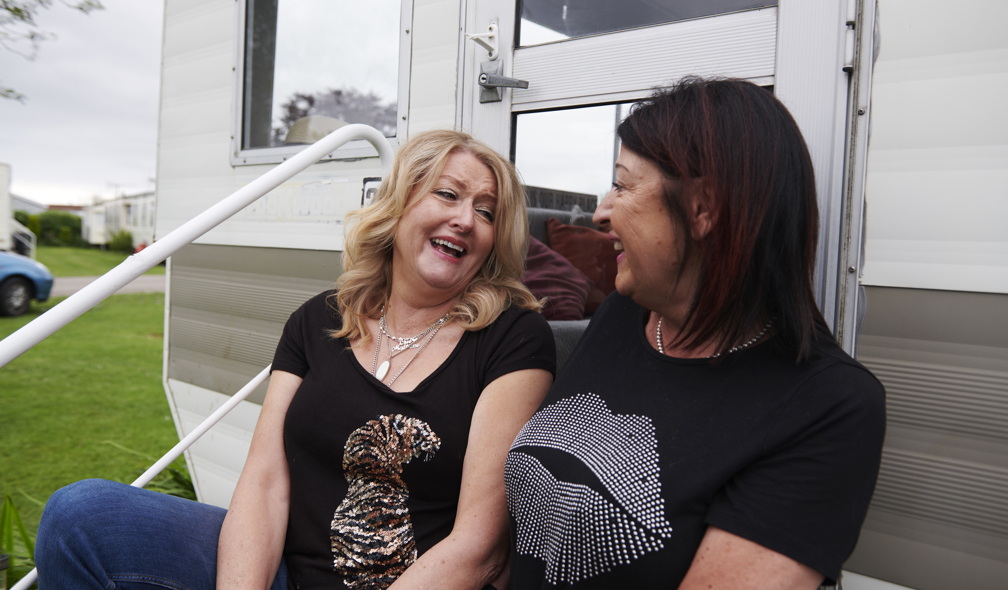Darlaine’s story
“My sister has been my rock.”
Darlaine was diagnosed with a rare form of breast cancer, and after a lot of research about mastectomies she decided to “just get rid of ‘em”. She embraced her new appearance with an intricate flower tattoo across her chest, each flower representing someone in her family who supported her through her condition. She also found friendship with a number of other women with lobular breast cancer, and together they aim to support each other through the ups and downs of living with the condition.

Video transcript
When I started to think about going back to exercise after my surgery, it was a bit difficult to know what to do, but I had made up a series of small movements. I've taken a bit from yoga, a bit from tai chi and a bit from just stretching. It just really helps with the tightness around my scars doing this. I have a diagnosis of invasive lobular breast cancer. When I first got back in the water, I was really anxious that I'd be swimming and the scar would open and my implants would go floating off up the swimming pool. And then I got this ridiculously floral swimming hat. I probably look totally ridiculous, it's just part of the whole thing.
My sister won't come swimming with me, she's too embarrassed, so she'll kind of sit and watch, probably fall asleep actually. It's really nice to have someone that close, that you, that you can hang out with and that really is supportive like that. Yeah, she's really dragged me through this.
How Darlaine gets moving
Darlaine began swimming as a way to loosen the muscles and scar tissue around her breasts after her bilateral mastectomy. In the pool, Darlaine has also created her own exercises and routines based on Tai Chi, which she jokes makes her look like a “silly 60- something in a floral pink swimming hat”. She likes the peace that comes with getting active solo in the pool, and also enjoys it when she can visit her sister on the coast and have a laugh together about how entertaining Darlaine looks doing her movements in the sea.
Darlaine is proud to be learning to listen to her body, resting when she needs and taking it easy after her most recent surgery , saying that “small steps, little and often” is what currently works best for her. She’s still determined to get out walking as much as she can with friends and can’t wait for some time to head down to the beach for a swim in the sea.

Cancer
A cancer diagnosis can make things feel very uncertain and living with a long-term condition after your diagnosis is difficult. Being active before, during and after treatment can improve your outlook and help you manage your symptoms. Because it doesn’t matter whether it’s something small and new, or just that little bit more of something you already do. It all makes a difference.

Swimming
Take a dip, try water aerobics, walk in water, or count lengths as you move through water in a way that works for you.

Cancer
A cancer diagnosis can make things feel very uncertain and living with a long-term condition after your diagnosis is difficult. Being active before, during and after treatment can improve your outlook and help you manage your symptoms. Because it doesn’t matter whether it’s something small and new, or just that little bit more of something you already do. It all makes a difference.

Find activities you enjoy
Being active doesn’t have to involve traditional ways of moving. You can find something that you genuinely enjoy doing and have tonnes of fun doing it. It’s easier to stay motivated when you move in a way that you enjoy.
